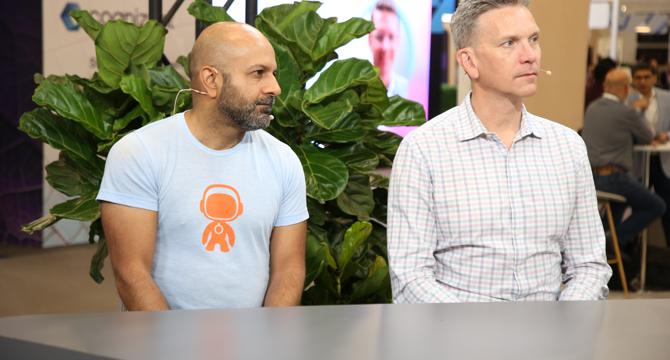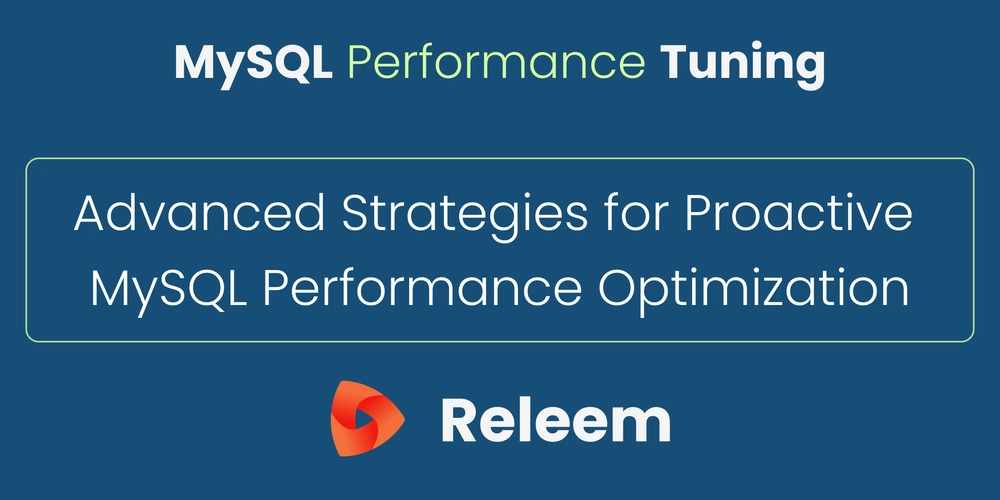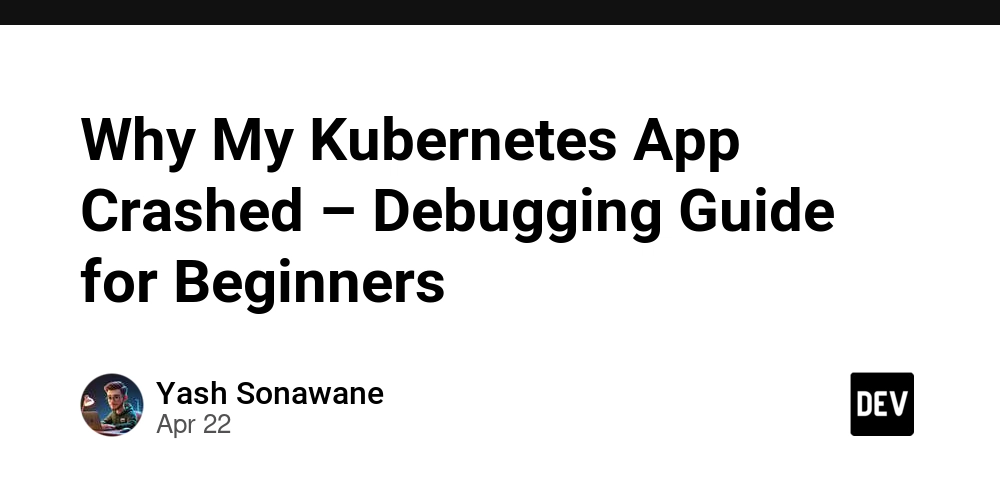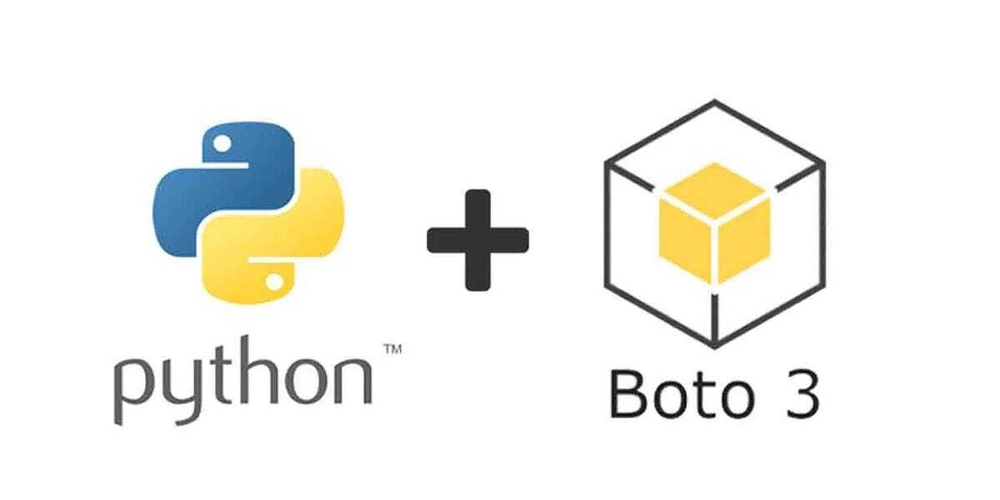Devops News
Dev
317

Image Credit: Dev
Azure Applied Skills: Creating and configuring network security groups
- This article series focuses on creating and configuring network security groups in Azure.
- The purpose is to secure network traffic in a virtual network and control access between frontend and backend workloads.
- The exercise outlines the steps to create and configure network security groups using Azure virtual networking services.
- By completing the exercise, you will successfully configure secure access and establish a strong security boundary within your virtual network.
Read Full Article
19 Likes
Siliconangle
302

Image Credit: Siliconangle
Infrastructure at scale: How Shopify and Google Cloud are shaping AI commerce
- Shopify and Google Cloud are collaborating to build scalable, adaptive systems for AI-driven commerce, leveraging cloud-native infrastructure like container orchestration and serverless platforms.
- The partnership focuses on optimizing infrastructure for unpredictable traffic spikes, real-time inference workloads, and rapid innovation to deliver seamless customer experiences.
- Shopify's mission to reduce operational toil for entrepreneurs is supported by agile and resilient technical underpinnings, including Google Cloud's GKE platform.
- The close partnership between Shopify and Google Cloud involves frequent feedback loops and stress testing, enhancing scalability for AI workloads in dynamic environments.
- Communication and collaboration between teams have become vital, with real-time operating models and shared feedback driving innovation in AI infrastructure.
- Experimentation and rapid iteration play a key role in staying ahead of market demands, with a focus on making infrastructure invisible so merchants can prioritize product and customer experience development.
- The cultural aspect of innovation is highlighted, emphasizing the importance of embracing failure, iteration, and risk-taking for commercial success.
- The collaboration between Shopify and Google Cloud extends to making Kubernetes simpler for AI applications, allowing for more experimentation and exploration without complexity.
- Both companies aim to empower entrepreneurs by reducing infrastructure concerns and enabling them to thrive in their ecosystem through innovative AI-driven solutions.
- The shift towards a culture of experimentation and continuous learning is seen as crucial for driving success in AI-driven commerce and reshaping operational processes.
Read Full Article
17 Likes
Dev
407

Image Credit: Dev
Advanced Strategies for Proactive MySQL Performance Optimization
- Proactive MySQL performance optimization is crucial for maintaining steady performance under increasing data and traffic volumes.
- Moving beyond traditional reactive fixes, proactive optimization involves advanced tuning techniques like continuous monitoring, automation, machine learning, indexing, and chaos engineering.
- Proactive monitoring involves tools like Releem and Percona Monitoring and Management to track performance metrics and identify bottlenecks early.
- Key performance indicators (KPIs) for MySQL health include QPS, query latency, CPU and RAM utilization, disk IOPS, and lock waits.
- Automation in performance tuning eliminates the need for manual configuration adjustments by leveraging intelligent tools to optimize the database automatically.
- Machine learning can optimize MySQL by analyzing historical data, predicting peak loads, and suggesting preemptive fixes, such as adding indexes before traffic spikes.
- Advanced indexing techniques like covering indexes, partial indexes, composite indexes, and functional indexes can significantly enhance query performance.
- Tools like Releem, MySQLTuner, Percona Toolkit, IndexAdvisor, and EverSQL offer automated analysis and recommendations for optimizing indexes.
- Modern MySQL optimization involves a proactive, data-driven approach with continuous monitoring, automation, AI insights, and advanced indexing.
- As tools become more advanced and autonomous, MySQL performance tuning is expected to become increasingly hands-off, with AI and automation playing key roles.
- Implementing these advanced strategies can help build a database that adapts to evolving needs, ensuring consistent performance and user satisfaction.
Read Full Article
24 Likes
Siliconangle
362

Image Credit: Siliconangle
StormForge joins CloudBolt: Turning FinOps insights into action
- CloudBolt Software Inc. has acquired StormForge Inc. in a move that highlights the shift from cloud cost awareness to intelligent, automated cost optimization tools.
- Only 13% of organizations have a mature FinOps program, according to the FinOps Foundation, and companies are now seeking outcomes rather than just insights.
- CloudBolt's differentiating factor is its ability to reduce the time between insight and action, offering automation to resolve cost anomalies in real time.
- The integration of StormForge and CloudBolt aims to deliver deeper cost visibility, while also expanding beyond Kubernetes to bring ML-powered automation to other areas of the cloud.
Read Full Article
21 Likes
Discover more
- Programming News
- Software News
- Web Design
- Open Source News
- Databases
- Cloud News
- Product Management News
- Operating Systems News
- Agile Methodology News
- Computer Engineering
- Startup News
- Cryptocurrency News
- Technology News
- Blockchain News
- Data Science News
- AR News
- Apple News
- Cyber Security News
- Leadership News
- Gaming News
- Automobiles News
Medium
194

Best Certificates/Projects for MLOps in 2025
- AWS Certified Machine Learning — Specialty: AWS ML implementation
- Microsoft Certified: Azure AI Engineer Associate: Azure ML/AI expertise
- Certified Kubernetes Administrator (CKA): For orchestrating ML workloads
- TensorFlow Developer Certificate: ML implementation fundamentals
Read Full Article
11 Likes
Dev
126

Image Credit: Dev
Log Management with `journalctl` and `/var/log` in Red Hat Linux
- Logs are an important aspect of Linux system administration, providing insights into system health, security, and performance.
- In Red Hat-based systems, two powerful logging mechanisms coexist: journalctl and classic plain-text logs in /var/log.
- The journalctl command allows for viewing and filtering logs, managing journal size and retention, and analyzing logs by time or priority.
- Classic logs in /var/log provide easy-to-work-with log files for specific purposes, such as system events, authentication logs, and web server logs.
Read Full Article
7 Likes
Openstack
240

Image Credit: Openstack
The Power of OpenStack: How Sicredi Transformed Its Infrastructure to Stay Competitive
- Sicredi, a major Brazilian financial institution, turned to Canonical and OpenStack to enhance its IT infrastructure and remain competitive in the financial sector.
- The company sought to optimize resource utilization, improve developer efficiency, and speed up product development.
- Sicredi implemented the OpenInfra Blueprint combining Linux, OpenStack, and Kubernetes for open-source benefits.
- The shift was driven by the limitations of Sicredi's traditional virtualization platform and the need for infrastructure automation.
- By choosing OpenStack, Sicredi found a cost-effective solution that aligned with their technical requirements and desire for open-source tools.
- Canonical OpenStack was selected for its enterprise-grade support, cost-effectiveness, and expertise.
- Sicredi transformed its IT infrastructure with Charmed OpenStack, enabling automation, flexibility, and scalability.
- Charmed OpenStack significantly reduced costs for Sicredi, making their environment up to three times more cost-effective than public cloud solutions.
- The shift to infrastructure-as-code approach improved operational efficiency, scalability, agility, and automation capabilities for Sicredi.
- By integrating Kubernetes with Charmed OpenStack, Sicredi improved cluster management and delivery of scalable applications.
Read Full Article
14 Likes
Dev
330

Image Credit: Dev
Too Many Redirects Error: What It Means and How to Fix It
- Encountering the 'Too Many Redirects' error can be frustrating and common in web browsing, causing an infinite loop of URL redirections.
- The error occurs when a web server continuously redirects the browser back and forth without reaching a definitive endpoint.
- Various browsers display this error differently, but the underlying issue remains the same across platforms.
- Common causes include incorrect redirect rules, plugin conflicts, SSL misconfigurations, corrupted cookies, and issues with third-party services.
- Diagnosing redirect loop problems involves inspecting browser DevTools, reviewing server logs, testing across different clients, and using redirect analysis tools.
- To resolve the error as a website visitor, clearing browser cookies and cache, using incognito mode, and disabling browser extensions are recommended.
- Website owners can fix the error by checking and fixing redirect rules, resolving plugin conflicts, ensuring SSL configuration is correct, and reviewing CDN settings.
- For advanced troubleshooting, tools like cURL, developer tools, server logs, and monitoring tools can help identify and resolve redirect issues effectively.
- Pinggy offers tools for monitoring and troubleshooting redirect loops, assisting in maintaining a smooth web experience for users.
- Prevent future redirect loops by documenting redirect strategies, limiting redirects, conducting regular audits, and testing redirects before deployment.
- Understanding the causes of Too Many Redirects and utilizing appropriate solutions can help website owners and visitors overcome this error and ensure a better browsing experience.
Read Full Article
19 Likes
Dev
158

Image Credit: Dev
How Knowledge Sharing and Communication: Building a Collaborative Dev Culture
- Effective knowledge sharing and communication are crucial for success in software development, impacting project outcomes significantly.
- Teams prioritizing knowledge sharing deliver projects faster and experience higher client satisfaction.
- Challenges like time wasted understanding code, information loss, and slower onboarding arise from poor knowledge sharing.
- Key benefits of effective knowledge sharing include faster onboarding, higher code quality, improved innovation, and enhanced team resilience.
- Practical strategies for building a collaborative culture include pair programming, creating a knowledge base, and fostering regular knowledge-sharing sessions.
- Integrated communication tools play a vital role in supporting effective collaboration among developers.
- Balancing synchronous and asynchronous communication is crucial for maintaining productivity and efficiency within development teams.
- A step-by-step approach involves assessing the current state, choosing the right tools, starting small, and creating accountability for knowledge sharing.
- Overcoming common challenges such as time constraints, codebase complexity, and low participation requires strategic implementation and user-friendly tools.
- Measuring success through metrics like onboarding time, search time, repeated questions, bus factor, team satisfaction is essential for evaluating knowledge-sharing initiatives.
- Building a sustainable knowledge-sharing culture requires continuous evaluation, refinement, and the right tools to foster collaboration and learning within development teams.
Read Full Article
9 Likes
Dev
105

Image Credit: Dev
Why My Kubernetes App Crashed – Debugging Guide for Beginners
- Learn how to debug your first Kubernetes crash like a pro (even if you’re just starting out).
- Step 1: Understand the Crash Types: CrashLoopBackOff, ImagePullBackOff, OOMKilled, Completed.
- Step 2: Check Pod Status by using kubectl get pods command.
- Step 3: Check Pod Logs using kubectl logs command.
Read Full Article
6 Likes
Kubernetes
0

Kubernetes Multicontainer Pods: An Overview
- Kubernetes has become the go-to platform for deploying cloud-native architectures.
- The sidecar pattern in Kubernetes allows developers to extend application functionality.
- Sidecar containers can be defined within a Pod manifest using spec.initContainers field.
- The sidecar pattern is useful for implementing cross-cutting concerns and modern networking capabilities.
Read Full Article
Like
Dev
117

Image Credit: Dev
Azure Applied Skills: Create and configure virtual networks
- In this article series, we will be configuring secure access to workloads using Azure virtual networking.
- The exercise covers the creation and configuration of virtual networks and subnets.
- Tasks include creating a virtual network, creating a subnet, and configuring vnet peering.
- The virtual networks app-vnet and hub-vnet are successfully created and peered in this exercise.
Read Full Article
7 Likes
Dev
240

Image Credit: Dev
Getting Started with Boto3: The AWS SDK for Python
- Boto3 is the official AWS SDK for Python, allowing you to interact with AWS services programmatically.
- It enables developers to create, configure, and manage AWS services, automate cloud workflows, and integrate AWS into Python apps.
- The installation and setup process involves installing Boto3 and configuring AWS credentials.
- Boto3 provides basic operations for listing S3 buckets, launching an EC2 instance, and invoking a Lambda function, among other common use cases.
Read Full Article
14 Likes
Dev
321

Image Credit: Dev
Mastering the mv Command in Linux
- The mv command is a powerful tool in Linux that is used for moving and renaming files and directories.
- It allows you to move files or directories from one location to another, and also rename them.
- Practical examples include moving a file to another directory, renaming a file, and moving a directory.
- Additional tips and best practices are provided to help avoid overwriting files by mistake and perform bulk operations.
Read Full Article
19 Likes
Dev
317

Image Credit: Dev
🐰Easter Sale – Learn & Grow for Just $5.99! 🐰
- This Easter, invest in your future without breaking the bank with the Easter Sale.
- All premium courses available for just $5.99 on www.utclisolutions.com.
- Courses range from C# Programming to DevOps and Leadership & Personal Growth.
- Don't miss the limited time offer to upskill and level up your career.
Read Full Article
19 Likes
For uninterrupted reading, download the app